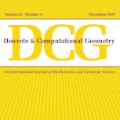Recent advancements in autonomous driving have seen a paradigm shift towards end-to-end learning paradigms, which map sensory inputs directly to driving actions, thereby enhancing the robustness and adaptability of autonomous vehicles. However, these models often sacrifice interpretability, posing significant challenges to trust, safety, and regulatory compliance. To address these issues, we introduce DRIVE -- Dependable Robust Interpretable Visionary Ensemble Framework in Autonomous Driving, a comprehensive framework designed to improve the dependability and stability of explanations in end-to-end unsupervised autonomous driving models. Our work specifically targets the inherent instability problems observed in the Driving through the Concept Gridlock (DCG) model, which undermine the trustworthiness of its explanations and decision-making processes. We define four key attributes of DRIVE: consistent interpretability, stable interpretability, consistent output, and stable output. These attributes collectively ensure that explanations remain reliable and robust across different scenarios and perturbations. Through extensive empirical evaluations, we demonstrate the effectiveness of our framework in enhancing the stability and dependability of explanations, thereby addressing the limitations of current models. Our contributions include an in-depth analysis of the dependability issues within the DCG model, a rigorous definition of DRIVE with its fundamental properties, a framework to implement DRIVE, and novel metrics for evaluating the dependability of concept-based explainable autonomous driving models. These advancements lay the groundwork for the development of more reliable and trusted autonomous driving systems, paving the way for their broader acceptance and deployment in real-world applications.
翻译:暂无翻译




